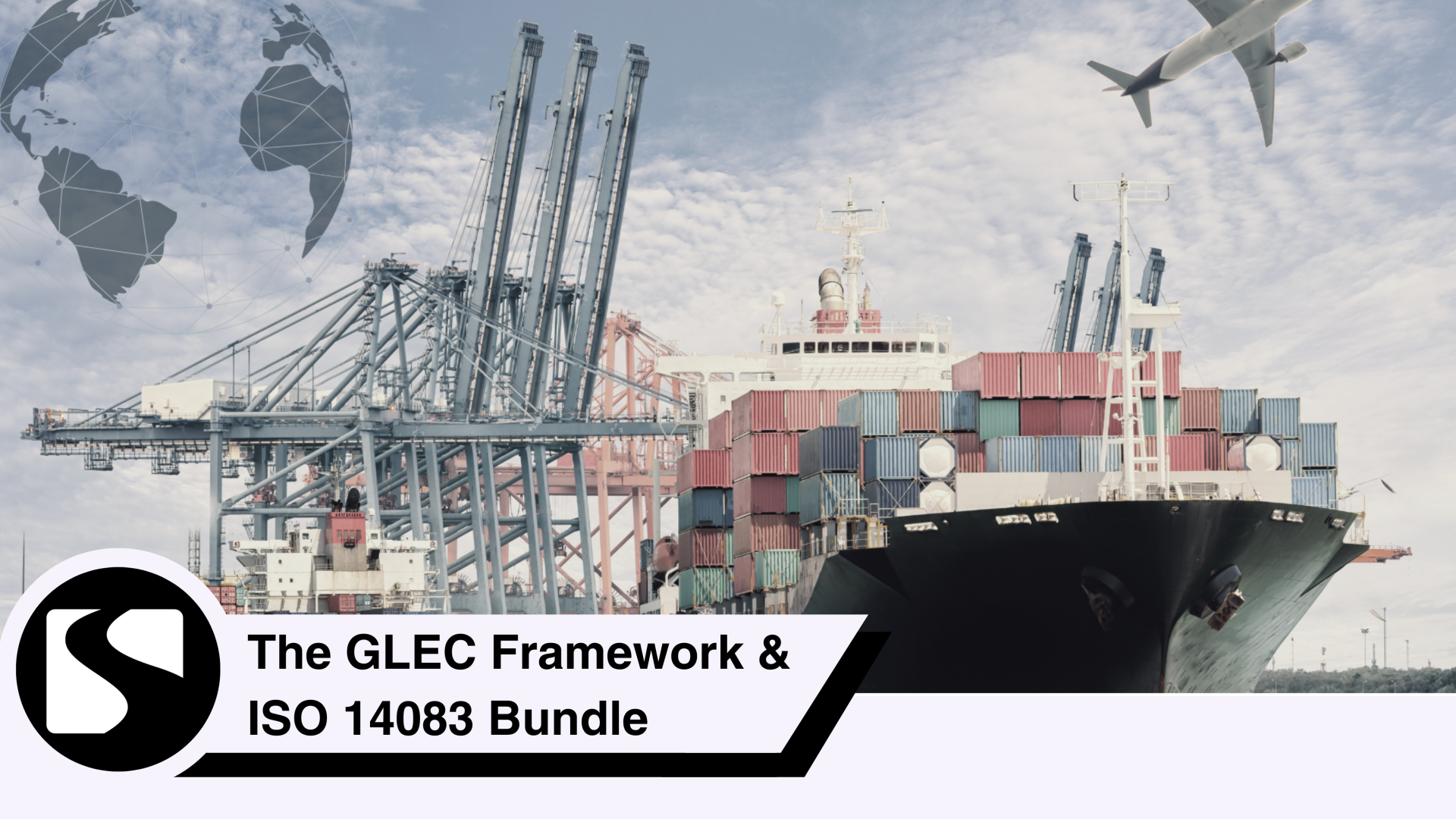track your emissions
Introduction to The GLEC Framework
Use the GLEC Framework to calculate and report emissions from multimodal supply chains.
Write your awesome label here.
LEVEL
Introductory
FORMAT
Self-paced
DURATION
3-4 hours
ACCESS
6 months
WhAT'S INSIDE
Course Contents
Overview of Module Content
Module 1: Smart Freight Centre & The GLEC Framework
- Getting Started
- What is the GLEC?
- Introducing the GLEC Framework
OVERVIEW OF MODULE CONTENT
Module 2: The GLEC Framework
- Coverage of Operations in the Transport Chain
- Transport Chain and its Transport Chain Elements (TCEs)
- Calculating Emissions for Three Scopes of an Organization
- Inclusion of IPCC Gases and Pollutants
- Coverage of emissions from All Forms of Fuel and Energy Sources
- Alignment with International Standards
- Exclusions from the GLEC Framework
OVERVIEW OF MODULE CONTENT
Module 3: Calculation of the Activity of the TCE
- Step 1: Calculation of the Activity of the TCE
- Capturing Consignment Mass and Distance
- Example: Calculating the Activity of the TCE
- Calculating Hub Operation Activity
- Step 2: Identifying the Applicable Emission Intensity for the TCE
- Data Categories and Quality
- Step 3: Calculating the TCE Emissions
- Calculate the Total GHG Emissions of the TCE
OVERVIEW OF MODULE CONTENT
Module 4: Reporting Emissions
- KPIs to Report Emissions
- Total Emissions
- Emission Intensity
- Granularity
- Reporting Requirements
- Reporting Level
- Tracking Emission Reductions with the GLEC Principles
- Public and B2B Reporting
- Assurance and Certification
- Beyond Reporting
Why should I take this course?
This course introduces the GLEC Framework (Global Logistics Emissions Council) and how to adopt it. By the end of the course you will understand how to apply the basics of calculating and reporting logistics GHG emissions across global multimodal supply chains according to the GLEC Framework.
This self-paced e-learning is designed as an introduction to the GLEC Framework for sustainability and logistics professionals, as well as fleet operators who want to calculate and set the basis to reduce logistics emissions.
The GLEC Framework serves as a primary guideline on how to implement ISO 14083 compliant reporting. If you want to calculate your emissions compliant with ISO 14083 then this training is for you. The course helps you and your organization to apply and understand the basics of calculating and reporting of GHG emissions for your global supply chain.
After completing this course, you’ll be well equipped to join our GLEC & ISO 14083 Calculation Workshop, and you can explore this and other educational resources in our GLEC program page.
Course Bundle Available!
This course is also available as part of a course bundle made up of two courses focused on The GLEC Framework and ISO 14083, the Introduction to the GLEC Framework and GLEC & ISO 14083 Calculation Workshop.
View the course bundle for more information.
View the course bundle for more information.

Payment Options
ENROLL NOW, PAY NOW
Select 'Enroll & Pay Now' to confirm your enrollment and secure your spot instantly. SFC Members & group bookings, please select payment option 2 in order to qualify for discounts.
ENROLL NOW, PAY LATER
SFC Members and group bookings select this option. Select 'Enroll Now & Pay Later' to reserve your course seat. Our team will reach out to you with an invoice and detailed payment instructions via email.
